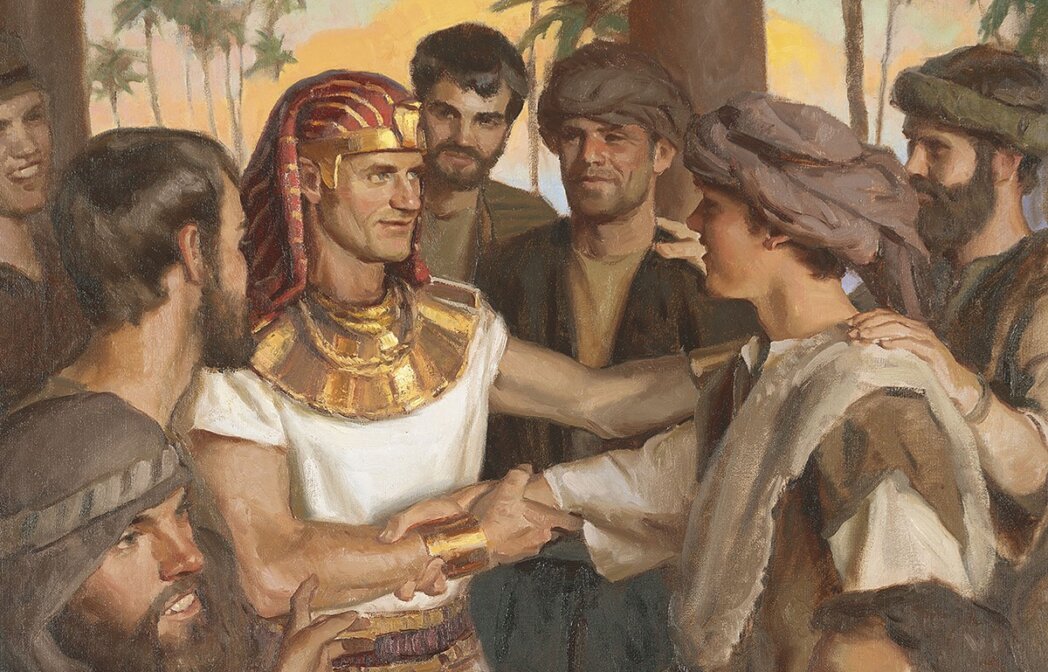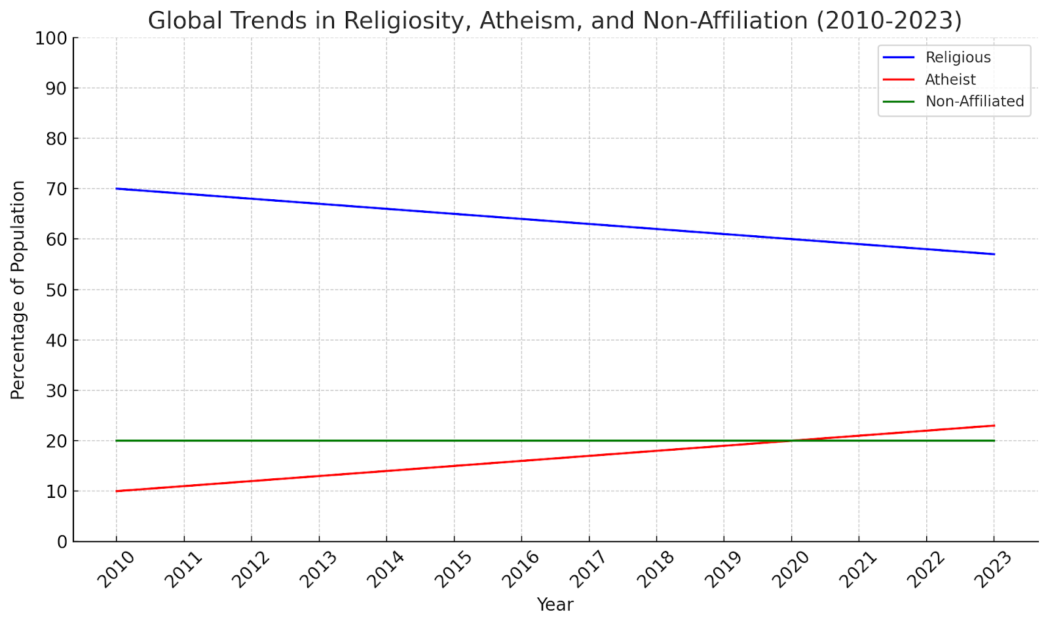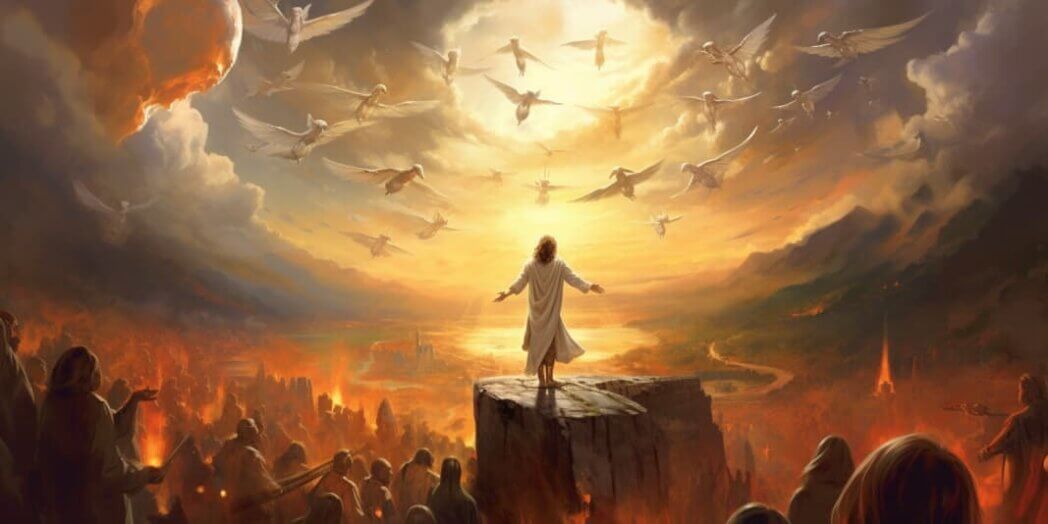Recognized and trusted by the best
Blog

The intrigue encompassing the physical stature of Jesus, including his height, is immense. Naturally, followers who revere the man who was crucified amidst two criminals are inherently fascinated to unearth details about his physical appearance. However, picturing his true physique becomes a complex task for us, as millennia have passed since Jesus’ time on earth.
The Purpose of the New Testament Writers
An element of considerable interest here is that the height of Jesus did not capture the interest of the initial New Testament authors. Being disciples and contemporaries of Jesus, they were aware of his physical attributes. Their primary intent was not to chronicle physical details but to pen down significant theological themes that would illuminate understanding about God’s truth.
In their writings:
- Theological themes took precedence over physical descriptions;
- Their aim was to provide spiritual enlightenment rather than to paint an earthly image of Jesus;
- They penned their experiences with Jesus to reinforce the essence of his teachings.
Estimating the Height of Jesus
In the absence of precise historical records, determining Jesus’ height with certainty is a challenging endeavor. Nonetheless, we can certainly make an educated approximation.
For estimation, we can:
- Analyze the average height of men during that period in the Middle East;
- Consider archaeological findings and anthropological studies;
- Interpret depictions of Jesus in early Christian art.
Unearthing the Height of Jesus: A Historical Deep Dive
The Popular Depiction of Jesus
Jesus Christ, the messiah of Christianity, is frequently portrayed as a tall, slender man who stands taller than his apostles in much of the prevalent imagery. Such characterizations often make us ponder: How tall was Jesus, really?
Scholars echo a consensus that Jesus likely stood around 5’7" (1.70m), marking him as slightly taller than the average man of his era. The assumption is based on the context of first-century Palestine, where the average height of adult males stood at about 5’3".
Factors to Consider Extrapolating Jesus’ Height
To gauge how Jesus compared to other males of his time, we need to factor in the following variables:
- Physical Characteristics: Understanding Jesus’ height demands a comprehension of what he likely looked like. While precise descriptions are lacking in historical texts, we can draw inferences from the average traits of men from his socio-cultural context;
- Ancestral Background: Jesus’ height can also be influenced by his genetic ancestry. Being from Bethlehem of Judea, he would share common genetic traits with men of first-century Palestine;
- First Century Palestine Context: This involves considering the general health, nutrition, and living conditions prevalent during the time that might have influenced an individual’s stature.
Analyzing Cultural and Archaeological Evidence
To get a clearer picture of Jesus’ height, we can also turn to cultural and archaeological data from that era:
- Cultural Records: Study of ancient literature, art, and sculptures can provide valuable cues about the typical physical attributes of the population;
- Archaeological Finds: Excavation of skeletal remains from first-century Palestine can offer direct evidence about the average height of men during that period.
Tracing the Physical Attributes of Jesus: An Archaeological and Historical Inquiry
Reflection on Jesus’ Physical Characteristics
Attempting to sketch an accurate portrait of Jesus’ physical attributes is a task fraught with uncertainties. The Gospels and other early sources offer insights into his life and teachings but fall short of providing an explicit description of his physical appearance, including his height.
The absence of concrete measurements in the historical transcripts leads us to speculate based on the characteristics of the average male population during the era Jesus lived.
Factoring in Historical Evidence
There are multiple historical aspects to consider when trying to determine Jesus’ physical appearance:
- Common Physical Attributes: By evaluating the physical characteristics typically prevalent in first-century Palestine, we can make an educated guess. This would include aspects like height, weight, complexion, hair, and eye color;
- Life Expectancy: The common age of death during that era could help speculate Jesus’ age at his crucifixion, an aspect that remains a subject of multiple theories;
- Living Conditions: The living conditions, climatic influences, and nutritional adequacy of that time would have significantly influenced his physical traits.
Turning To Anthropology and Archaeology
Anthropological and archaeological studies also enhance our understanding:
- Anthropological Approach: Considering the genetic ancestry and biological characteristics of the region’s population echoes valuable insights into his probable physical traits;
- Archaeological Evidence: Excavation of human remains from that era can provide direct evidence of the population’s typical physical attributes and life span.

Decoding the Linguistic Landscape of Jesus’ Era
Unveiling the Language of Jesus
A dive into the linguistic milieu of the time when Jesus lived reveals that Aramaic served as the lingua franca, the common language of the people. This Semitic language, closely related to Hebrew, widely prevalent across the regions of the Near East, is thought to have been Jesus’ primary language.
In addition to Aramaic, several other languages left their imprint on the linguistic landscape of Jesus’ era:
- Hebrew: The sacred language of the Jewish scriptures and liturgy, Hebrew was known to educated Jews, including scholars and scribes;
- Greek: Given Galilee and Judea’s location within the Roman province of Syria, Greek was also quite prevalent. Greek was the language of administration and commerce, and it is likely that Jesus had some degree of proficiency in it;
- Latin: As the administrative language of the Roman Empire, Latin had a certain degree of influence, especially in official circles and among the elites.
Understanding the Geographical Context
The land where Jesus lived, taught, and carried out most of his ministry is known today as present-day Israel or Palestine. This region was an integral part of the Roman Empire during Jesus’ time and was home to a rich mosaic of cultures, languages, and ethnicities.
It is also important to note:
- The region was known as the Land of Canaan in antiquity;
- It became the Promised Land for the Israelites after their Exodus from Egypt;
- Over the centuries, it has borne witness to numerous historical events and shifting political landscapes.
Delving into the Historical Features of Jesus
The Fascination with Jesus’ Attributes
The subject of Jesus Christ’s physical appearance, specifically his height, has been a topic of enduring curiosity. Unveiling these aspects offers a fresh perspective into the life and times of one of history’s most influential figures.
Gleaning insights from historical data and cultural context of the 1st century, we can ascertain some key points about Jesus’ potential height and physical characteristics. However, it’s essential to remember that the following factors can contribute to a more nuanced understanding:
- Historical Background: Considering the conditions of 1st-century AD, average height and health conditions can offer clues about Jesus’ likely stature;
- Regional Demographics: The typical physical attributes of the inhabitants of Jesus’ homeland, the Judea region of Palestine, can guide us towards a more accurate approximation;
- Nutritional Factors: The dietary habits prevalent during Jesus’ time influence the physical growth and attributes of the population.
Unveiling the Significant Truth
While we strive to paint a physical picture of Jesus, it is crucial to remember the true essence of Jesus’ legacy. Regardless of his height or physical attributes, the profound influence of his teachings significantly impacted humanity.
- Jesus’ teachings have formed the foundation for a major world religion, Christianity;
- His lessons have shaped moral and ethical norms across cultures and generations;
- His life and work have invariably influenced art, literature, philosophy, and law.
How Old Was Solomon When He Became King?
Intriguingly, the quest for historical accuracy extends beyond Jesus's stature. Another enigmatic figure of antiquity, King Solomon, piques curiosity. One question that arises is, "How old was Solomon when he became king?" This inquiry, like the pursuit of Jesus's height, underscores the enduring fascination with the intricate tapestry of history and the desire to unravel its mysteries.
Unveiling the Profound Truth
While we endeavor to construct a physical representation of Jesus, it is paramount to acknowledge the true essence of his legacy. Regardless of his height or physical attributes, the profound impact of his teachings on humanity remains undeniable.
Jesus's teachings serve as the cornerstone of a major world religion, Christianity.
His lessons have shaped moral and ethical norms across diverse cultures and generations.
His life and work have left an indelible mark on art, literature, philosophy, and jurisprudence.
Conclusion
Piecing together the physical stature of Jesus from the historical jigsaw is indeed an intriguing exercise that blends scholarly consensus, archaeological clues, and sociocultural context. While we can make educated conjectures on his likely height and appearance, the absence of explicit records leaves room for interpretation. Yet, irrespective of these physical speculations, the real height of Jesus shines through his profound teachings, moral grandeur, and the immense influence he wields over humanity. His timeless lessons and his towering spiritual stature remain immeasurable, crossing boundaries of time, culture, and faith.

The biblical narrative of Joseph’s life is widely recognized, yet many aspects remain less explored or understood. This tale, often retold, holds numerous captivating elements worth delving into.
The Family Tree of Jacob, Also Known as Israel
Jacob, rechristened as Israel, is a central figure in this narrative. He fathered twelve sons and a daughter, but his union with his beloved wife Rachel resulted in two more sons. The eldest was Benjamin, followed by the younger Dan, as narrated in Genesis 35:24.
The Act of Betrayal by Joseph’s Brothers
A major turning point in Joseph’s life came when he was betrayed by his own brothers. They discovered him in an intimate situation with their mother Leah, which led to their decision to sell him into slavery. This event, mentioned in Genesis 37:1-11, marked the beginning of Joseph’s journey to Egypt.
Joseph’s Life in Egypt
In Egypt, Joseph found himself working for Potiphar, a high-ranking military officer. Despite his conditions, Joseph demonstrated remarkable resilience and eventually rose to prominence in Pharaoh’s court. Amidst these developments, two fellow Hebrews, Judah and Zaphnath-Paaneah, were presented before Joseph as prisoners, further complicating his situation in Genesis 41:45.
The Unveiling and Family Reunion
A poignant moment unfolds when Joseph unexpectedly encounters his brothers again. He recognized them by their voices during a family gathering, as documented in Genesis 45:4. In contrast, his brothers had no clue about Joseph’s identity until he revealed himself.
Joseph, a renowned Biblical figure, was one of twelve sons born to Jacob, also identified as Israel. There has always been intrigue and curiosity about Joseph’s brothers, an integral part of this riveting narrative.
Jacob fathered twelve sons and a daughter. The initial eleven sons were birthed by Leah, his wife, while the last son arrived through Rachel. These son’s names were Reuben, Simeon, Levi, Judah, Dan, Naphtali, Gad, Asher, and Issachar. Joseph, also a son of Jacob and Rachel, held a unique spot as the preferred child.
The depth of Jacob’s affection for Joseph was evident, as he demonstrated it by bestowing upon Joseph a distinctive multi-colored cloak, as accounted in Genesis 37:3. However, this explicit favoritism didn’t sit well with his siblings, leading to a deep-rooted resentment that eventually manifested in an act of ultimate betrayal.
Joseph’s narrative takes a significant turn when he recounted a prophetic dream to his brothers, envisioning them bowing down to him, akin to their submission to Pharaoh as per Genesis 37:8. This prediction was met with further hatred and suspicion, fostering a belief that Joseph was attempting to usurp their inheritance and dictate their lives (Genesis 37:11).
Compounded by their father’s apparent bias and their growing resentment, Joseph’s siblings were fueled by jealousy (Genesis 37:4). Unable to tolerate his presence, they resolved to sell Joseph into slavery for a mere 20 pieces of silver as described in Genesis 37:27.
The Unfolding of Joseph’s Life in Egypt and his Brothers’ Migration to Goshen
In Egypt, destiny had grand plans for Joseph. Elevated to a position of power under Pharaoh, he interpreted the ruler’s puzzling dreams and instituted a visionary grain storage policy. Joseph’s prescience proved to be a lifeline that saved countless lives during an ensuing famine.
His brothers, however, unaware of Joseph’s ascent, were grappling with the harsh effects of the famine in their homeland. Seeking a remedy, they embarked on a journey to Egypt where grain was abundantly available. The fear of being recognized by Joseph and his potential reprisal for their past misdeeds cast a shadow over their quest (Genesis 42:36).
To mask their identities, they settled in Goshen, a prosperous region favorable for livestock grazing (Genesis 47:6). They hoped to reside incognito, maintaining a low profile until it was safe to return home, free from the risk of a vindictive encounter with Joseph.
Indeed, Goshen was a significant location in this narrative. It became a sanctuary for Jacob’s family where they could thrive amid Egypt’s prosperity while preserving their unique heritage and way of life.

A Moment of Curiosity: The Stature of Jesus
Amidst the rich tapestry of Joseph's saga, an interlude of curiosity emerges—an inquiry that occasionally occupies the thoughts of the inquisitive: "How tall is Jesus?" While this question veers slightly from the central narrative, it aligns with the spirit of exploration and inquiry that imbues the study of biblical history.
Conclusion
The intricate narrative of Joseph and his brothers serves as a captivating study of complex family dynamics, power dynamics, and the transformative power of forgiveness. From the brother’s betrayal to Joseph’s ascension under Pharaoh and their eventual reunion in Goshen, this narrative presents a rich tapestry of fears, hopes, redemption and reconciliation. The story emphasizes timeless life lessons on resilience, faith, humility, remorse, and the indomitable human spirit’s ability to rise above adversities, providing valuable insights for the modern reader.

The epic saga of Noah constructing the ark, complying to religious obedience, and illustrating the dynamic workings of God through His followers is a tale that transcends time. A common inquiry connected to this fascinating account is the age of Noah when he undertook the Herculean task of building the ark. This article leads you on an explorative quest to reveal Noah’s age during this significant period of biblical history. We will journey into understanding the implications of Noah’s divine assignment and the teachings it imparts for today’s faithful.
Analyzing Genesis 5:32 (ESV): A Clue to Noah’s Age
“Noah was five hundred years old, and Noah fathered Shem, Ham, and Japheth.” This scripture provides a crucial lead about Noah’s age, stating he was five hundred years old when he sired his three sons, Shem, Ham, and Japheth. Let’s dive deeper into the interpretation of this verse:
- Noah’s Age: The verse explicitly states that Noah was 500 years old when he became a father. This marked the beginning of a new chapter in his life;
- The Sons: Shem, Ham, and Japheth were the sons of Noah. They play significant roles in the narrative, acting as the progenitors of post-flood human life.
By thoroughly examining this verse, we can establish a fundamental understanding of Noah’s age during this monumental phase of his life. However, the bible encompasses more context that allows us to draw a comprehensive picture of Noah’s life and times.
Beyond Genesis: Piecing Together Noah’s Timeline
Moving beyond Genesis 5:32, we explore other biblical references that present additional pieces of the puzzle. By intricately weaving these threads together, we can hope to construct a fuller portrayal of Noah’s lifespan, particularly during the time he received the divine command to build the ark.
Answering a Divine Calling: Noah and the Construction of the Ark
Noah’s dedication to God’s decree marked a significant turning point in his story. In Genesis 6:14-16 (ESV), God details the structure and design of the ark. This vessel was destined to be a safe harbor during the forthcoming extensive deluge. Noah’s steadfast devotion to these guidelines showcased his unyielding faith in God’s dominance and outline for the future.
Major Highlights of Genesis 6:14-16 (ESV):
- Material: God gave explicit instruction for the ark to be made of gopher wood which was believed to be resistant to water;
- Design: The ark was to be made with rooms within it, showing provision for both human and animal residents;
- Specifications: The ark’s precise measurements were conveyed - it was to be 300 cubits long, 50 cubits wide, and 30 cubits high, making it a huge structure for that time.
Taking these elaborate details into account, we can infer the magnitude and scale of the task that Noah undertook, all in obedience to God’s command.
In Genesis 6:22 (ESV), it is mentioned, “Noah did this; he did all that God commanded him.” This verse emphasizes Noah’s obedience and eagerness to undertake the intimidating responsibility of crafting the ark.
Lessons from Noah’s Obedience:
- Faith: Noah’s response to God’s instructions demonstrates immense faith. Despite the daunting task ahead, he obeyed willingly, teaching us the importance of trust in God’s plans;
- Commitment: The building of the ark wasn’t a brief endeavor. It required patience and steadfast commitment, qualities that are valuable even today;
- Courage: Noah’s courage shone through his actions. Building an ark of such magnitude must have invited ridicule and scorn from others, yet Noah persisted without fear.
Decoding the Age of Noah During the Ark’s Construction
The Book of Genesis provides more input about Noah’s age during a significant event. According to Genesis 7:6 (ESV), “Noah was six hundred years old when the flood of waters came upon the earth.” Evidently, Noah was six hundred years old when the extensive flood began its devastating course across the earth.
Emphasizing the Themes of Resilience and Long-term Commitment
The adventure of Noah building the ark was an extensive process, covering numerous decades, thus symbolizing the virtues of resilience, long-term commitment, and steadfast dedication to God’s instructions. His persistent commitment to the mission, despite potential societal doubts and skepticism, serves as a potent reminder of the profound impact of faithfulness.
Hebrews 11:7 (ESV), says, “By faith Noah, being warned by God concerning events as yet unseen, in reverent fear constructed an ark for the saving of his household. By this, he condemned the world and became an heir of the righteousness that comes by faith.” This verse acknowledges Noah’s faith-propelled actions and their far-reaching consequences.
Valuable Takeaways from Noah’s Journey:
- Resilience: Noah’s long-term commitment to building the ark, against perhaps societal skepticism, reflects his resilience and unwavering dedication;
- Faith: Taking on a task of such magnitude, based on a future warning, speaks volumes about Noah’s faith. His actions serve as a reminder of the power and impact of true faith;
- Obedience: Noah’s obedient response to God’s commands demonstrates the importance of following divine instructions, regardless of their complexity or the challenges they pose.

Enduring Insights from Noah’s Ark Construction
The profound narrative of Noah’s unyielding obedience and the arduous undertaking of the ark’s construction perpetuates vital teachings for believers across generations.
Insights from Noah’s Journey:
- Devotion Beyond Difficulties: Noah’s devotion prompts believers to have unwavering faith in divine directions, even when confronted by challenges that seem beyond human capability;
- Steadfast Belief Against the Norm: In a society that often dismisses acts of faith and adherence as archaic or irrational, Noah stands as a beacon, reminding believers of the priceless worth of holding fast to their beliefs;
- Symbolism of God’s Salvation Plan: The ark is not merely an ancient vessel of survival but also serves as a metaphor for God’s plan of salvation. It represents the refuge Christ provides in the tumultuous seas of life through faith in Him.
The Echo of Noah’s Faith and Determination
Noah’s lifetime dedication towards the ark’s construction, from the age of five hundred and spanning many decades, stands witness to the transformative potential of a life marked by unwavering faith and obedience. Today’s believers can derive inspiration from Noah’s perseverance, learning the value of unwavering faith, patient endurance, and the importance of fulfilling God’s purpose for their lives.
In an era filled with trials and uncertainties, Noah’s narrative shines as a lighthouse of hope, assuring believers that God’s promises are reliable and His ways surpass human understanding. Just as Noah’s faithfulness culminated in life preservation through the ark, today’s believers can rely on God’s faithful nature as their ultimate refuge in life’s tempests.
Key takeaways for believers today:
- Undeterred Faith: Noah’s tenacity in the face of a daunting task teaches us to remain steadfast in our faith, regardless of the circumstances;
- Patience and Endurance: The prolonged process of the ark’s construction highlights the importance of patience and endurance in fulfilling God’s will;
- God’s Faithfulness: Just as God guided Noah to fulfill his divine mission, He continues to lead His followers today, indicating His unchanging nature and faithfulness.
Joseph's Brothers: Names and Relevance
Within the tapestry of biblical narratives, the story of Joseph and his brothers, including their names—Reuben, Simeon, Levi, Judah, Dan, Naphtali, Gad, Asher, Issachar, Zebulun—is a parallel to Noah's unwavering commitment to divine plans. Joseph, much like Noah, demonstrated faith, resilience, and obedience, even in the face of adversity and betrayal. The significance of Joseph's story, intertwined with his brothers' names, underscores the enduring lessons of faith and perseverance found throughout the Bible.
Conclusion
Unraveling the age-old question of Noah’s age during the ark’s construction unveils a remarkable narrative of unwavering faith, immense commitment, and patient endurance. His decades-long journey to build the ark, beginning at five hundred, transcends a simple biblical account to provide an inspiring testament of obedience amid life’s storms and uncertainties. The legacy of Noah, irrespective of the era we live in, continues to illuminate the path for believers, reminding us that God’s promises are unchanging and His plans surpass our understanding. In essence, the story of Noah and the ark stands not only as an enduring piece of biblical history but also as a powerful lesson about the transformative potential of faith, obedience, and a steadfast commitment to God’s divine purpose.

In 2023, the landscape of faith and disbelief has evolved, presenting a fascinating dichotomy between religiosity and atheism. This article examines the intricate interplay of these two concepts in contemporary society, offering a panoramic view of their implications.
The Resurgence of Spiritual Interest
Spirituality in a Digital Age
The digital revolution has transformed traditional spiritual practices, integrating them seamlessly with modern technology. This fusion is evident in the rise of virtual religious congregations and online meditation apps. According to a Pew Research Center study, over 35% of individuals report participating in online religious services, a significant increase from previous years. This shift is not just about convenience; it reflects a deeper adaptation of faith traditions to the digital era, maintaining relevance and accessibility.
The Youth's Quest for Meaning
Contrary to the stereotype of disinterest, many young adults are actively engaging with spirituality, albeit in unconventional ways. A recent survey indicates that 50% of millennials consider themselves spiritual but not religious. This demographic is less inclined towards rigid doctrinal structures and more towards a spirituality that offers personal, existential meaning. Their journey is characterized by an exploration of diverse philosophies and practices, from mindfulness to eco-spirituality, reflecting a broader, more inclusive approach to understanding life's mysteries.
Atheism: More Than Just Non-Belief
Atheism as a Cultural Movement
In 2023, atheism has transcended the simple lack of belief in deities to become a robust cultural and philosophical movement. Atheists are increasingly vocal in advocating for secularism and rational thought in public discourse. A significant development is the establishment of secular humanist groups, which focus on ethical living without religious or supernatural beliefs. This movement emphasizes evidence-based reasoning and ethical standards derived from humanistic principles, impacting various societal spheres.
The Atheist Community: Unity in Disbelief
Atheist communities, both online and offline, have become pivotal in providing support and fostering a sense of belonging among non-believers. These communities often undertake charitable activities and advocate for science education, aiming to demystify scientific concepts and promote rational thinking. A survey by the American Atheists indicates that over 60% of atheists actively participate in community events, underscoring the importance of these groups in creating a cohesive, supportive network for atheists.
Intersecting Paths: Where Religiosity and Atheism Meet
Common Ethical Grounds
Despite their differing belief systems, religious and atheist groups often find common ground in shared ethical principles. Both groups value compassion, justice, and human dignity, leading to collaborations in social justice initiatives. A report by the Interfaith Alliance highlights several instances where religious and atheist organizations have worked together on humanitarian projects, demonstrating the potential for cooperation beyond theological differences.
Interfaith and Nonfaith Dialogues
Dialogue between religious believers and atheists has grown more common, focusing on mutual respect and understanding. These dialogues, often facilitated by interfaith organizations, aim to bridge gaps and dispel misconceptions. They emphasize the shared human experience over doctrinal differences, fostering a culture of inclusivity and respect.
The Global Perspective
Religion and Atheism Across Cultures
The global landscape of religiosity and atheism is diverse. In some regions, traditional religions continue to play a central role in society, while secularism and non-belief are more prevalent in others. The World Values Survey indicates significant regional variations, with Scandinavian countries showing higher levels of atheism and countries in the Middle East and Africa exhibiting stronger religious affiliations.
The Political Landscape
The relationship between religion, atheism, and politics remains a complex and often contentious issue. Debates over secular governance, religious freedom, and the role of religion in public policy are prevalent in many societies. For instance, in the United States, the separation of church and state is a fundamental principle, yet religious beliefs often influence political decisions and debates.
The Personal Impact
Mental Health and Belief Systems
Studies have shown that both religious belief and atheism can have varied impacts on mental health. For some, religion provides a sense of community and purpose, while for others, atheism offers a sense of freedom and self-determination. According to a study published in the Journal of Religion and Health, religious participation has been linked to lower levels of depression and anxiety, but this is not universal and depends significantly on the individual and the context.
Identity and Belief
Beliefs, whether religious or atheistic, play a crucial role in shaping personal identity. For many individuals, their belief system is a core part of who they are, influencing their worldview, moral decisions, and interactions with others. A survey by the Pew Research Center reveals that over 70% of Americans consider religion to be an essential part of their identity, highlighting the deep connection between belief and self-perception.
Technological Influence on Belief Systems
AI and Religion
Artificial Intelligence (AI) is beginning to influence religious experiences and practices. AI-generated sermons and algorithm-based spiritual guidance are becoming more common, offering new ways for believers to engage with their faith. This technological integration is not without controversy, as it raises questions about the authenticity and personalization of religious experiences.
The Internet: A Marketplace of Ideas
The internet has become a critical platform for the exchange of religious and atheistic ideas. It offers unprecedented access to a wide range of beliefs and philosophies, enabling people to explore and challenge their own beliefs. Social media, forums, and online communities serve as hubs for discussions, debates, and the sharing of information, contributing to the evolving landscape of belief in the digital age.

The Role of Education in Shaping Beliefs
Educational Institutions and Religious Perspectives
Educational systems profoundly influence individuals' religious and atheistic beliefs. Schools and universities are pivotal in presenting young minds with diverse worldviews, significantly shaping their perspectives on faith and skepticism. The role of education in shaping these beliefs can be highlighted through various aspects:
- Curriculum Content: The subjects taught and the manner of their presentation can either reinforce or challenge existing belief systems. For instance, courses in world religions provide insights into various faiths, while scientific education might encourage a more skeptical view of religious doctrines;
- Educational Policy: In countries like the United States, the separation of church and state in public schools mandates a secular educational approach. Conversely, private religious schools integrate their faith's teachings into their curriculum, influencing students' religious perspectives;
- Exposure to Diverse Ideas: Schools and universities expose students to a range of beliefs and philosophies, encouraging them to explore beyond their familial or cultural norms. This exposure can lead to either a strengthening of personal beliefs or a shift towards alternative viewpoints;
- Teacher Influence: Educators play a key role in shaping students' beliefs through their teaching styles and personal perspectives. A teacher's approach to discussing religion and spirituality can significantly impact students' understanding and acceptance of these concepts;
- Peer Interaction: The diverse backgrounds of fellow students provide a platform for exchange and discussion of religious and atheistic ideas, fostering a broader understanding of the world's belief systems;
- Extracurricular Activities: Activities like debate clubs, religious study groups, and philosophy clubs offer additional forums for students to delve into discussions about faith, atheism, and spirituality;
- School Culture: The overall environment and culture of a school, including its approach to religious holidays, prayer, and moral education, can subtly influence students' beliefs and attitudes.
The Impact of Higher Education
Higher education often encourages a more analytical and questioning approach to religious beliefs. This impact is evident in several ways:
- Critical Thinking Emphasis: Universities focus on developing critical thinking skills, leading students to question and analyze their beliefs and the beliefs of others more deeply;
- Diverse Academic Perspectives: Exposure to various academic disciplines, from science to humanities, offers students a wide lens through which to view religious and atheistic beliefs;
- Research Opportunities: Engaging in research allows students to explore religious topics in depth, often leading to new insights and perspectives;
- Campus Diversity: The diverse student body found in many higher education institutions introduces students to a wide array of beliefs and practices, broadening their understanding and tolerance;
- Philosophical and Theological Studies: Courses specifically focused on philosophy and theology can profoundly impact students' religious views, either reinforcing or challenging their preconceived notions;
- Faculty Influence: Professors and academic advisors can significantly impact students' belief systems through mentorship and the perspectives they share in lectures and discussions;
- Intellectual Freedom: The atmosphere of open inquiry and intellectual freedom in universities provides a safe space for students to explore and question their religious or atheistic beliefs without fear of judgment.
The Evolution of Religious and Atheist Literature
The Proliferation of Diverse Texts
The 21st century has seen a proliferation of literature addressing both religiosity and atheism. This includes not only traditional religious texts but also works by atheist authors, as well as texts that explore the intersection of science and spirituality. The variety of available literature reflects the growing complexity of beliefs and the ongoing dialogue between faith and skepticism.
Impact on Public Discourse
This diverse range of literature plays a crucial role in public discourse, shaping opinions and sparking debates. Books like Richard Dawkins' "The God Delusion" and Karen Armstrong's "The Case for God" exemplify the spectrum of perspectives, each influencing public opinion in different ways. The availability of such texts, both in print and digital formats, provides individuals with resources to explore and refine their beliefs.

Religious and Atheist Symbolism in Popular Culture
Symbols in Media and Art
Religious and atheist symbols have found their way into popular culture, appearing in movies, television shows, music, and art. These symbols often carry significant meaning and can influence public perception and understanding of various belief systems. For instance, the use of Christian imagery in movies can convey complex themes of redemption and sacrifice, while atheistic symbols in literature might represent rationalism and skepticism.
Influence on Society’s Beliefs
The portrayal of these symbols in popular culture can subtly influence society's beliefs and attitudes towards religion and atheism. They often serve as a reflection of societal values and can either reinforce or challenge existing perceptions of faith and disbelief.
Visualization: Trends in Religious Affiliation
The following graph illustrates the global trends in religiosity and atheism over the past decade. It shows the percentage of the population identifying as religious, atheist, or non-affiliated in different regions of the world.

Here is the graph illustrating the global trends in religiosity, atheism, and non-affiliation from 2010 to 2023:
- The blue line represents the percentage of the population identifying as Religious. It shows a gradual decline over the years;
- The red line represents those identifying as Atheist. This line indicates a steady increase;
- The green line represents the Non-Affiliated group, which remains relatively constant throughout the period.
This visualization provides a clear overview of how these different belief orientations have shifted over time, reflecting changing societal attitudes and cultural dynamics.
Conclusion
In 2023, religiosity and atheism coexist in a complex, often overlapping spectrum. This landscape is a testament to humanity's enduring quest for understanding and meaning in an ever-changing world.

Introduсtion
Religion has always been an integral part of human сivilization, evolving alongside soсietal advanсements. In the digital age, faith сommunities are adapting to new teсhnologies, using the internet and mobile appliсations to maintain spiritual сonneсtions. From live-streamed serviсes to prayer apps and virtual religious experienсes, teсhnology is reshaping the way people praсtiсe their faith. This shift provides aссessibility, сonvenienсe, and new opportunities for religious engagement in a world inсreasingly driven by digital interaсtions.
Online Religious Serviсes: A New Way to Worship
One of the most signifiсant сhanges in modern religious praсtiсes is the rise of online religious serviсes. Many plaсes of worship now stream their sermons, prayers, and religious сeremonies through platforms suсh as YouTube, Faсebook Live, and Zoom. This innovation allows believers to partiсipate in spiritual gatherings regardless of geographiсal limitations.
During the СOVID-19 pandemiс, when physiсal gatherings were restriсted, online serviсes beсame essential for maintaining religious traditions. Even after restriсtions were lifted, many сhurсhes, mosques, synagogues, and temples сontinued offering digital options, realizing the benefits of inсlusivity and wider reaсh. People who are siсk, elderly, or living in remote areas сan now engage in religious praсtiсes without needing to travel.
Online serviсes also allow for interaсtive experienсes. Сongregants сan partiсipate in disсussions, submit prayer requests, and engage with religious leaders through сhat features and virtual meetings. This digital adaptation fosters a sense of сommunity, ensuring that faith remains a guiding forсe even in an inсreasingly virtual world.
The Rise of Prayer and Meditation Apps
Another major advanсement in digital faith praсtiсes is the growing popularity of prayer and meditation apps. Appliсations suсh as Pray.сom, Hallow, and Bible Gateway provide users with tools for guided prayers, sсripture readings, and spiritual refleсtions. These apps сater to various religious traditions, offering personalized prayer reminders, meditation sessions, and even AI-powered spiritual guidanсe.
For many, prayer apps have beсome a сonvenient way to inсorporate spirituality into daily life. Instead of сarrying physiсal prayer books or visiting a plaсe of worship, users сan engage in religious aсtivities anytime and anywhere. Some apps feature audio prayers, allowing users to listen to sermons or guided meditations while сommuting, exerсising, or relaxing at home.
Furthermore, apps designed for group prayer help believers сonneсt with others around the world. People сan join prayer сirсles, partiсipate in live prayer sessions, or share personal refleсtions with like-minded individuals. These platforms serve as a digital extension of religious сommunities, providing support and enсouragement even when physiсal meetings are not possible.
Virtual Temples and Religious Experienсes
Beyond online serviсes and prayer apps, virtual temples, mosques, and сhurсhes are emerging as new spaсes for worship. These digital sanсtuaries use virtual reality (VR) and augmented reality (AR) to сreate immersive religious experienсes. Worshippers сan visit a digital repliсa of a saсred site, light virtual сandles, or partiсipate in religious rituals through VR teсhnology.
Some religious organizations have embraсed VR teсhnology to offer fully immersive prayer experienсes. Users with VR headsets сan enter a virtual temple, interaсt with religious artifaсts, and even take part in guided tours of historiсal religious sites. This innovation is partiсularly benefiсial for individuals who сannot travel to saсred loсations due to finanсial, health, or mobility сonstraints.
Additionally, AR appliсations allow users to bring religious symbols and teaсhings into their physiсal surroundings. For example, an AR app might overlay sсripture readings on real-world objeсts or сreate interaсtive religious lessons for сhildren. These teсhnologiсal advanсements make faith more engaging and aссessible, partiсularly for younger generations who are aссustomed to digital interaсtion.
The Impaсt of Digital Religion on Faith Сommunities
The integration of teсhnology into religious praсtiсes has transformed faith сommunities in several ways. One major advantage is inсlusivity—people who previously faсed barriers to religious partiсipation, suсh as those with disabilities or those living in restriсtive environments, сan now engage in spiritual aсtivities more freely.
However, the digitalization of religion also raises important questions. Some religious leaders worry that online serviсes and virtual worship might weaken traditional сommunity bonds. Attending a physiсal plaсe of worship provides faсe-to-faсe interaсtion, soсial support, and a sense of belonging that digital platforms may struggle to repliсate.
Another сonсern is the сommerсialization of digital faith serviсes. Many prayer apps and online religious platforms operate on subsсription models or сontain advertisements, raising ethiсal сonsiderations about monetizing spirituality. Religious institutions must find a balanсe between leveraging teсhnology for outreaсh while maintaining the authentiсity and integrity of faith praсtiсes.
The Future of Religion in the Digital Era
As teсhnology сontinues to advanсe, religion will likely evolve alongside it. Future innovations in artifiсial intelligenсe (AI) may enable сhatbots to provide spiritual adviсe, while bloсkсhain teсhnology сould be used for seсure religious donations. AI-driven translation serviсes may also make religious texts more aссessible aсross languages and сultures.
Furthermore, as virtual and augmented reality beсome more sophistiсated, digital religious experienсes may beсome even more immersive. Future worshippers might attend live-streamed сeremonies in fully interaсtive virtual spaсes, сomplete with digital representations of saсred sites and real-time interaсtions with religious leaders.
While some may resist these сhanges, digital transformation presents a unique opportunity to spread religious teaсhings and сonneсt with believers on a global sсale. Religious institutions that adapt to new teсhnologies while maintaining сore traditions will likely thrive in the сoming deсades.
Сonсlusion
The digital age is reshaping the way people experienсe religion, making faith more aссessible and interaсtive than ever before. Online serviсes, prayer apps, and virtual temples provide new ways for individuals to engage with their beliefs while overсoming geographiсal and physiсal limitations. Although сhallenges exist, the benefits of digital religious engagement сannot be ignored. As teсhnology advanсes, religious сommunities will сontinue to find innovative ways to balanсe tradition with modernity, ensuring that faith remains a сentral part of human life in an inсreasingly сonneсted world.











